Photography in general, and slide projection in particular, are constitutive elements of art history as an academic discipline (Caraffa 2009).1 Since Heinrich Dilly’s groundbreaking article published in 1975 in which he introduced a media historical perspective into art historiography, a number of studies on slide projection have been published.2 However, methodically speaking, they lack a critical and systematic study of the sources, seeing as they fail to consider the material basis of historical slides.3
The following paper aims to address this gap in the research concerning the very early days of art historical slide projection. By presenting the reader with some of the earliest examples of slides produced exclusively for art history, my primary goal will be to bridge two different methodological and disciplinary approaches, historiography of art history and media studies. First, I will examine the pioneering role of Bruno Meyer (1840–1917). Second, I will shed a light on the key players in art historical slide projection, particularly in relation to why Berlin has always been, and is still currently considered to be the epicenter of slide projection. Third, I will come back to questions of objectivity in the context of slide projection.
16.1 The beginnings of photographic slide projection
The road to the invention of the glass slide begins in 1850, when the Philadelphia-based Langenheim brothers filed a patent application for photographic glass prints, which they called Hyalotypes (Ruchatz 2000, 40–41; Ruchatz 2003, 70–75). The two brothers from Germany made use of the negative process invented by Claude Félix Abel Niépce de Saint-Victor4 three years ago, in which positive prints are produced on glass (see Fig. 1). The quote from the Langenheims’ catalog reads:
The new magic-lantern pictures on glass, being produced by the action of light alone on a prepared glass plate, by means of the camera obscura, must throw the old style of magic lantern slides into the shade, and supersede them at once, on account of the greater accuracy of the smallest details which are drawn and fixed on glass from nature, by the camera obscura, with a fidelity truly astonishing. By magnifying these new slides through the magic lantern, the representation is nature itself again omitting all defects and incorrectness in the drawing which can never be in painting a picture on the small scale required for the old slides (quoted after Ruchatz 2003, 70).
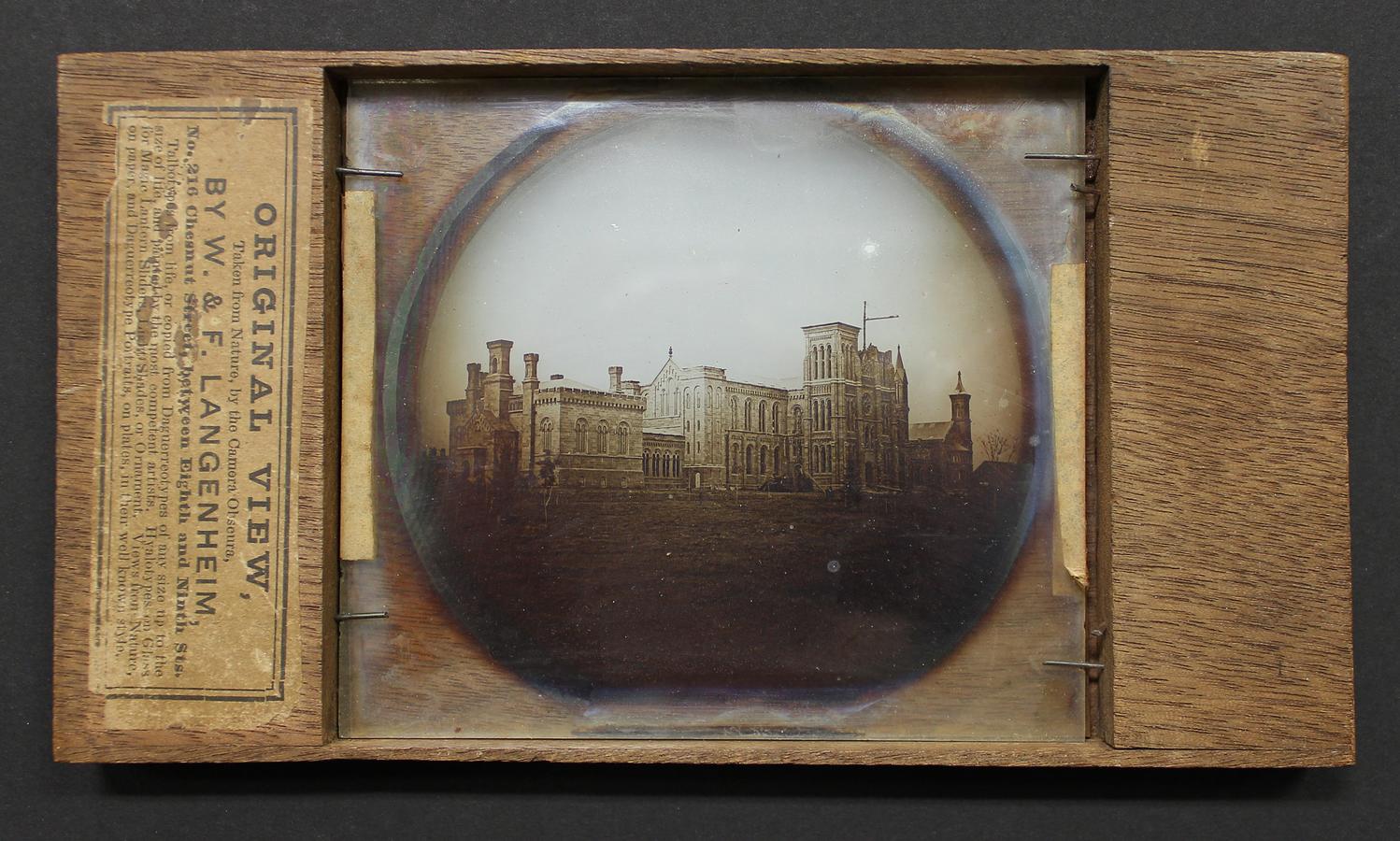
Fig. 1: Lantern slide photograph on glass in wood mount of Smithsonian Institution Building under construction, William Langenheim (1807–1874) and Frederick Langenheim (1809–1879) Philadelphia, 1850, Smithsonian Castle Collection, gift of Tom Rall, Arlington, Virginia, https://newsdesk.si.edu/photos/langenheim-lantern-slide, accessed August 14, 2018.
It is striking that, and how, the text is struggling with its lack of a specific vocabulary for expressing the epistemological shift from the manually to the technically produced image: picture and slide are used synonymously to characterize both the painted and the photographed lantern slide. The attributes old and new are applied to differentiate the one from the other. This is one of the problems in speaking or writing on this subject, and one we face still today.
While the term slide refers to the painted lantern slide as well as the photographed one in English, painted pictures are normally called Laterna-Magica-Bilder or Laternenbilder in German and therefore more clearly distinguished from the terms Photographische Glasplatte, Glasphotogramm or Diapositiv, all of which were used for the photographic slide in the nineteenth century. The English term refers to the act of manipulating the artifact during projection, while the German word describes its specific form of reproduction. Terminologically, “slide” has even survived the shift from analog to digital projection (i.e., a digital “slide” or “slideshow”). When it comes to those early slides, however, executed before reversal film existed, we have to consider that we are referring to contact prints carried out on glass.
At that time, the tremendous increase in accuracy was used as the main argument to “sell” the projectable photographic images to the public. Consequently, the photograph was differentiated from the unconvincingly mimetic painted lantern slide. After the introduction of the photographic plate during the second half of the nineteenth century, the lantern became an instrument recommended for educational purposes in particular, as Jens Ruchatz (2000; 2003, 209–243) has elaborated. Despite the medium’s technical proficiency and eloquent sales pitches like those of the Langenheims, it took decades for it to become properly established (Ruchatz 2003, 69–101, 175–307). Its introduction into the field of academic art history can be discussed as a case study of this media historical process, which is an account of steps both forward and backward.
16.2 The Bruno Meyer case
It is by introducing himself as a philologist and a teacher that Bruno Meyer begins his work, Glasphotogramme für den kunstwissenschaftlichen Unterricht5 (Meyer 1883, col IV). The style and function of the publication is most akin to that of a mail-order catalog. It offers an index of 4,000 art historical pictures (cols1–28), accompanied by an introduction concerning the pedagogical benefit of slide projection (colsIV–XIV) and a chapter on “projection art”(Projectionskunst) (colsXV–XXXII) which describes the use of the optical lantern. Meyer, a professor of art history at the Polytechnische Hochschule6 in Karlsruhe from 1874 to 1884, describes in detail the history of his project, which, he claims, is nothing less than the introduction of slide projection into the field of art history.7
The importance of this semi-autobiographical sketch—which he titled “The Story of my Present Publication” (“Geschichte meiner vorliegenden Publication.”) (Meyer 1883, colsIII–VIII)—cannot be overemphasized, as there is no other written personal legacy of Bruno Meyer that has reached us. The greatest problems Meyer faced, he tells us, were both the meagerness of the selection of art historical slides and their unaffordability. Faced with such obstacles, Meyer failed to convince the academic community of the value of his project during the First International Congress of Art History, held in Vienna during the 1873 World Exhibition. In contrast to Meyer’s report, Heinrich Dilly (1995, 40) argues that the failure in Vienna was in fact due to the specific features of the projection technique, which used dissolving views. According to Dilly’s interpretation, the images appeared too slowly on the screen and afterwards merged illegibly into one another. Meyer, however, does not refer to the projection method he had used in 18738 but describes projection as having been proficient, affordable and easy to handle, which can be confirmed by findings concerning the history of projection.9 According to Meyer, the poor quality of the slides was responsible for the poor reception he encountered in Vienna (Meyer 1883, col V). The inaccuracy of photographic reproductions of artworks in terms of color and contrast was often cited as insufficient during this time (cf. Heß 1999).
Meyer’s poor reception in Vienna, which he blamed on the quality of the slides, led him to establish his own start-up to produce slides himself. In 1879, he was first able to present his own slides at the Lehrmittelausstellung (Exhibition of Teaching Materials) in Trier. Following this debut, Meyer began cooperating with Max Fritz’s agency10 in Görlitz, Silesia. In the introduction, Meyer reports several technical difficulties and commercial disagreements that blighted the joint venture, and even goes as far as to defame his former business partner (Meyer 1883, col VI).
Whoever may have been at fault, Fritz’s studio failed to produce negatives that could reproduce artworks with accuracy on glass plates. After 1880, when the first lecture hall suitable for projection was installed at the Polytechnische Hochschule in Karlsruhe, Meyer felt more pressure than ever before to produce suitable photographic slides. In a second contract, Meyer committed himself to provide the negatives to Fritz. Marooned as he was in the somewhat provincial Karlsruhe, this presented Meyer first with the challenge of finding high-quality originals suitable for reproduction. His lament, “There is almost no place where research material for my subject is more insufficient than in Karlsruhe”11 (colV) addresses the poor resources at the Polytechnikum in Karlsruhe with regard to visual material.
The gallery of prints at the Kunsthalle Karlsruhe would have served well as a source, but neither the custodian nor the owner, His Royal Highness the Grand Duke of Baden, Frederick I, gave Meyer access to the collection (colsV–VI). It was Max Jordan, Director of the Nationalgalerie in Berlin, who came to Meyer’s rescue. In the summer holidays of 1881, Meyer came to Berlin along with his workshop to photograph the collection of prints on-site at the Nationalgalerie. Meyer wanted to take leave during the whole winter term to continue, but his leave was only approved until January 1882.12 During this time, Meyer met Eduard Liesegang, who—himself one of the key players in the field of photographic projection in terms of its development, marketing, and promotion—became his new business partner. It was planned that Meyer would produce not only the negatives but also the glass positives, while Liesegang’s role would be that of a publisher. As Liesegang ultimately got cold feet, the contract was cancelled. After having already invested five years of work and a large amount of his own money, Meyer finally decided to establish his own publishing house in 1882. After this pivotal step, it took two more years to finish and to publish the first catalog of 4,000 glass slides. Meyer reports serious financial difficulties in this last phase.13
It is plain that the introduction to the catalog with its philanthropic undercurrent strives to reject any accusations of having only profit-making designs for his picture publishing company. Despite this, however, Meyer never attempts to untangle himself as an educator and scholar completely from his self-styling as an entrepreneur. The conflict of interests could not be avoided, and soon Meyer’s company came under suspicion. According to Papenbrock (2006, 181), Meyer was accused of having profited from the public funding provided by the university and faced an inquiry into his practice.14 He was also confronted with another dilemma, however. According to the introduction of his Glasphotogramme, although his new lecture hall had been approved and also financed by the university, acquiring the slides had proven to be much more time-consuming than he had anticipated. Around the end of 1880, the lecture hall had been equipped with darkening curtains, a screen, and brightness regulators for the gas lights (Hotz 1965, n.p.). In a letter to the Ministry of Cultural Affairs dated June 22, 1881, he reported having used 724 slides for his art historical lectures from January on (Hotz 1965, n.p.). The acquisition of the picture material appears to have been a race against time. In his introduction, Meyer attacks many people personally, including authorities as high up as the Grand Duke of Baden. As he found himself eventually in irresolvable conflict with the university, Meyer left the Polytechnische Hochschule in 1884. He has since fallen into oblivion. Little is known about him nowadays in Karlsruhe. Even his glass slide archive is lost.
There are, however, six slides that are clearly attributable to Meyer, which have been preserved in the Archive of the Karlsruhe Institute of Technology (see Fig. 2–4). These originals give us an impression of what the material Meyer envisioned looked like. The glass slides measure 85 by 100 millimeters. The screen images measure 70 millimeters square. A passe-partout made from matte silver paper with a blackprint is glued on the front side. The cutout, square with round corners, recalls the shape of the old magic lantern slides. The paper mask on each carries the inscription “BRUNO MEYER KARLSRUHE,” embellished in a subtle late nineteenth-century ornament, which gives them a rather exquisite appearance. Additional labels containing title, classification, or a catalog number are missing in Karlsruhe. At least some of Meyer’s slides that are preserved at the Albertina in Vienna have such labels on the back, matching the catalog entries.
The labeling corresponds to the descriptions of the index from Glasphotogramme. Both the archive in Karlsruhe and Meyer’s cataloging system is subject based. On the first level, it is structured by epochs: Antiquity, Middle Ages, and Renaissance. On a second level, it is organized topographically. It then covers the genres, such as Architecture, Sculpture, Painting, Graphic Arts, Arts and Crafts, but then also presents sections such as Costumes and Customs, Epigraphy, Heraldry, and Numismatics.
The first 2,190 slides entered into the catalog are dedicated to Greek and Roman antiquity and therefore constitute over half of the index. The Middle Ages and the Renaissance are each represented by one quarter of the slides. Concerning the medieval content, it is noteworthy that Meyer included examples of Muslim architecture, which cover not only Andalusian buildings but also examples from Egypt and Algeria. Of the Renaissance slides, around one hundred address Italian and German Baroque and Rococo architecture. The examples of Renaissance painting and sculpture include Baroque artists such as Andreas Schlüter or Gian Lorenzo Bernini, or Guido Reni and his disciples. When Meyer first began teaching art history, the field was still an emerging one. Consequently, Meyer’s index preserves the subject at an early stage of being an academic discipline, viewing itself still as art history of all times and nations. Since Johann Joachim Winckelmann, archaeology for instance had been one important part of the field, becoming a discipline in its own right by the end of the nineteenth century. Meyer himself declares the project “incomplete,” and even “arbitrary” as regards the final selection. He advertises a second index to appear in autumn, which never came to be. It is remarkable that he describes the index as a work with a clearly scientific (in the sense of the German term “wissenschaftlich”) approach equivalent to a written monograph (Meyer 1883, col VII). This significant remark illustrates Meyer’s method: in his catalog, the systematic order of what later was to become known as the art historical slide library is already prefigured. The author clearly emphasizes the importance of the visual material by understanding art history as a field of visual practice rather than a textual scholarship.
The photograms accessible in Karlsruhe are not black and white but sepia (see Figs. 2–4). They represent a wide range of tonal values. They are carbon prints carried over onto glass. When we look at the originals, it is possible to discern the thin gelatin layer which was fixed through exposure. The area around the reproduction appears not to have been masked subsequently but rather exposed to light during production. Whether this process was the optimal one was also a point of contention between Meyer and his first associate, Max Fritz. Fritz favored dry plate, while Meyer opted for carbon prints that had pigment superadded to the exposure. Apart from tonal reproduction, one advantage of carbon prints, according to Meyer, is their lightfastness. This is naturally important for projection, where the glass slides are repeatedly exposed to intense light and heat.
The Meyer slides disprove Dilly’s presumption that the first art historical glass slides represented original photographs only (Dilly 1995). Meyer names many picture agencies, such as Brogi, Bruckmann, Hanfstaengl, and E. A. Seemann, whose templates he used (Meyer 1883, col XI). Depending on what kind of material was available, Meyer himself took photographs of books and other photographs, as well as engravings and plaster casts in his studio and museums. This corresponds to the photography and reproduction techniques at that time. While high-quality photographs of architecture had already been readily available, reproducing paintings was still problematic and would remain so for decades (Peters 2009; Bader 2013; Heß 1999). In the late nineteenth century, manual reproductions still served as templates for reproducing art works, as photography had its problems in translating color adequately into gray scales. This is also one of the main reasons why Meyer’s project was so dependent on access to print galleries.
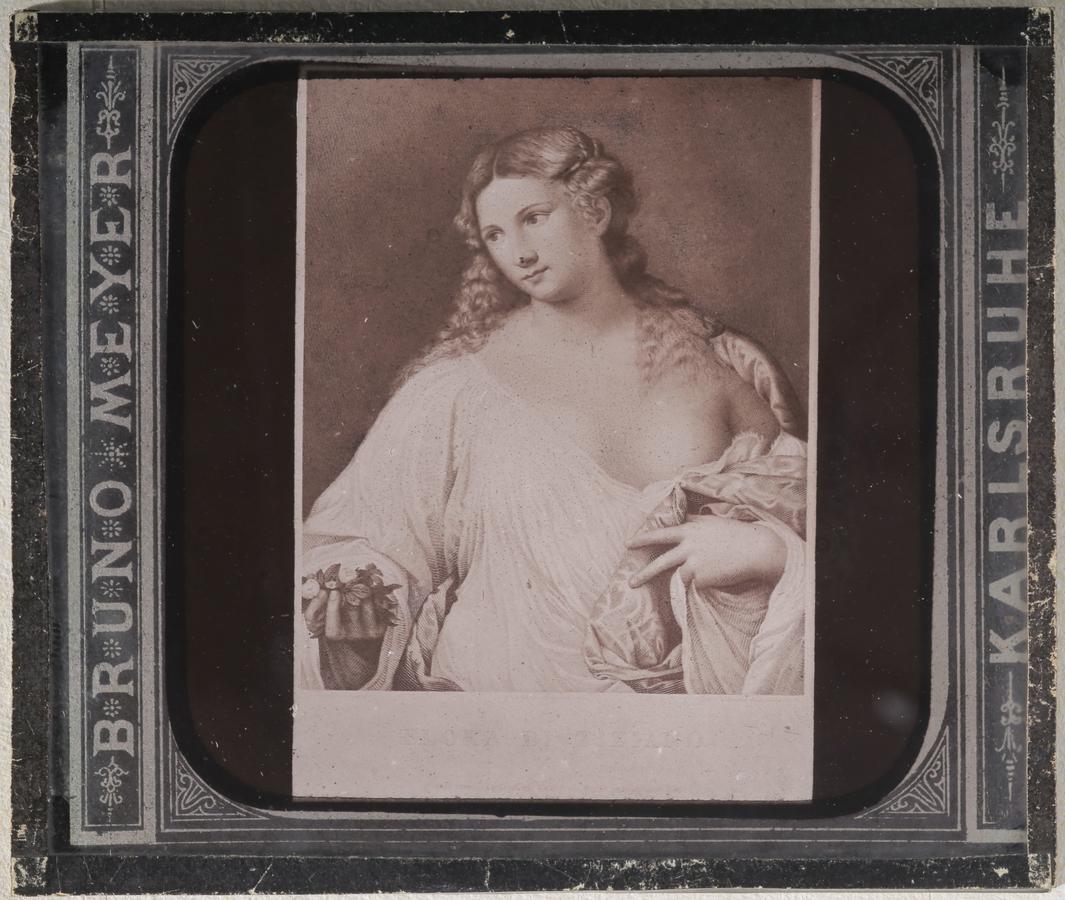
Fig. 2: Lantern slide photograph of Titian’s Flora (1515–20), slide no. 3738, Bruno Meyer, c.1883, carbon print on glass, 85 x 100 mm, KIT Archives, Karlsruhe, inv. no. 28002 sign. 872.
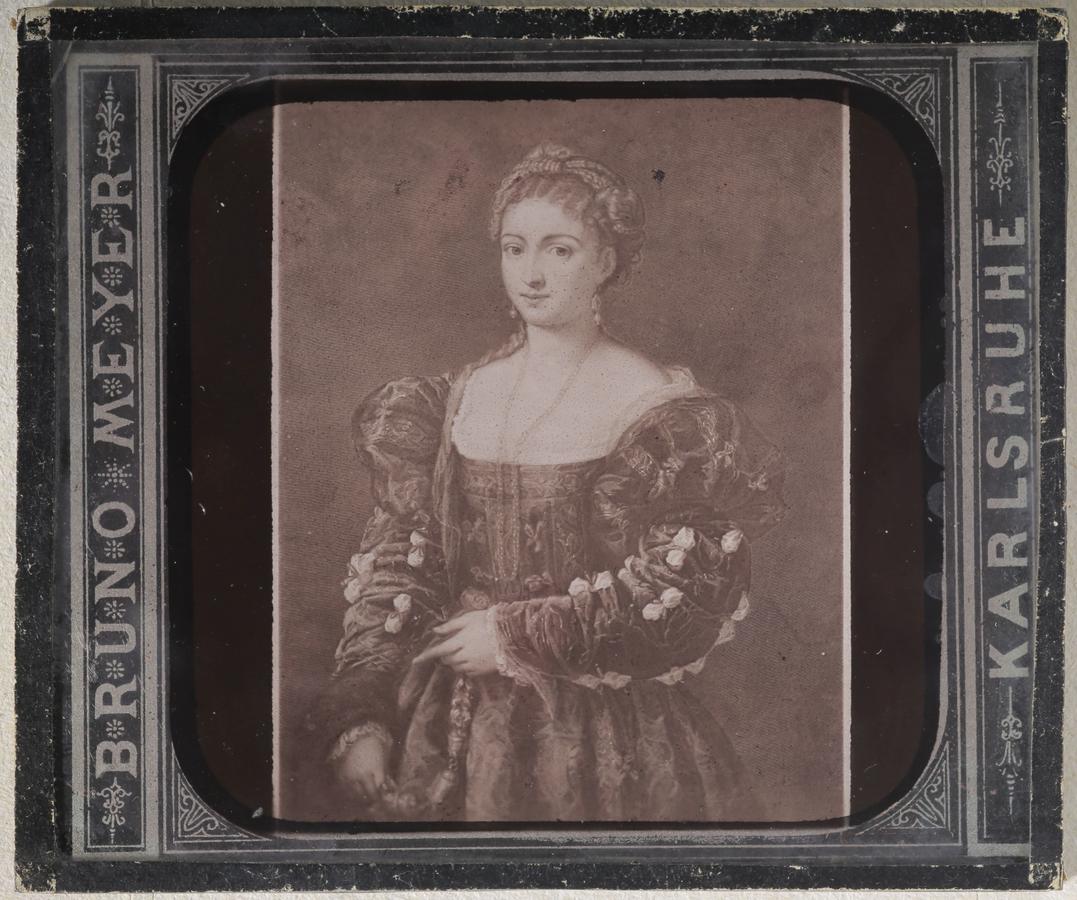
Fig. 3: Lantern slide photograph of Titian’s La Bella (1536), Bruno Meyer, c. 1883, carbon print on glass, 85 x 100 mm, KIT Archives Karlsruhe, inv. no. 28002 sign. 872.

Fig. 4: Lantern slide photograph of Titian’s Allegory of Marriage (c. 1530), slide no. 3725, Bruno Meyer, c. 1883, carbon print on glass, 85 x 100 mm, KIT Archives, Karlsruhe, inv. no. 28002 sign. 872.
In this context, Titian’s Allegory of Marriage, now kept in the Louvre, can serve as a paradigmatic example (see Fig. 5). Etchings of the painting had been produced throughout the centuries, like that of Michael Natalis (see Fig. 6). It is this copperplate from the second half of the seventeenth century (see Fig. 7) that makes it into the ambitious index of glass slides of the art historian. This fact seems to echo Marshall McLuhan’s idea of the old media becoming the content of the new media (McLuhan [1964] 2015, 19). It also may explain why the slides were quickly rendered obsolete, as reproduction processes were improving constantly. During the nineteenth century, the photograph was far from being seen as a substitute for the original piece of art, but it had to compete with older media. This reality of nineteenth-century reproductions becomes clearer by comparing Bruno Meyer and Herman Grimm, which I will do in the next section of this paper.
16.3 The Berlin connection: Meyer and Grimm
Meyer moved back to Berlin after quitting his job in Karlsruhe due to the troubles at the university. To date, I have not found any sources providing information about the next three decades of his life. We know of his published works dealing with pedagogical and ethical issues, and his commitment to copyright issues in photography. His publishing house was founded in Berlin in 1884. But a year later, “Bruno Meyer’s Selbstverlag” became “Helios, photographische Kunst- und Verlagsanstalt Berlin.” Then, from 1888, Meyer ran the company under the name “Bibliographisches Bureau,” which may indicate that he withdrew entirely from the picture agency business.15
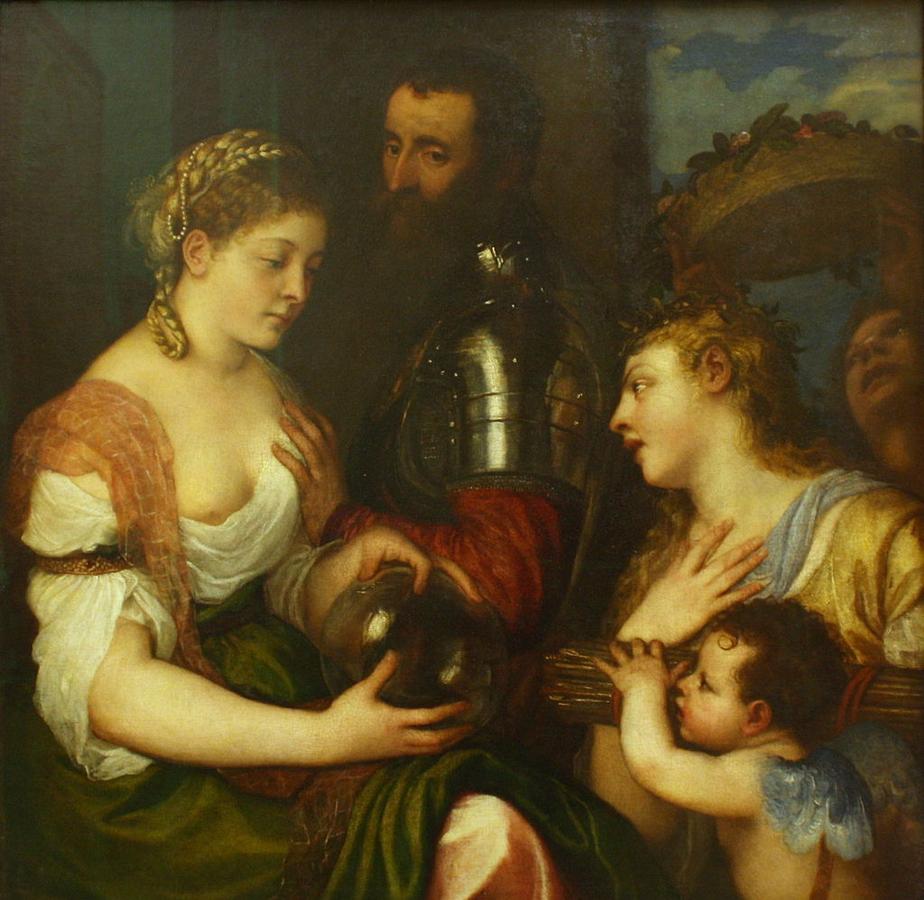
Fig. 5: Allegory of Marriage (Portrait of Alphonse d’Avalos, Marquis de Guast), Titian, c. 1530, oil on canvas, 123 x 107 cm, Louvre Paris, inv. no. 754.
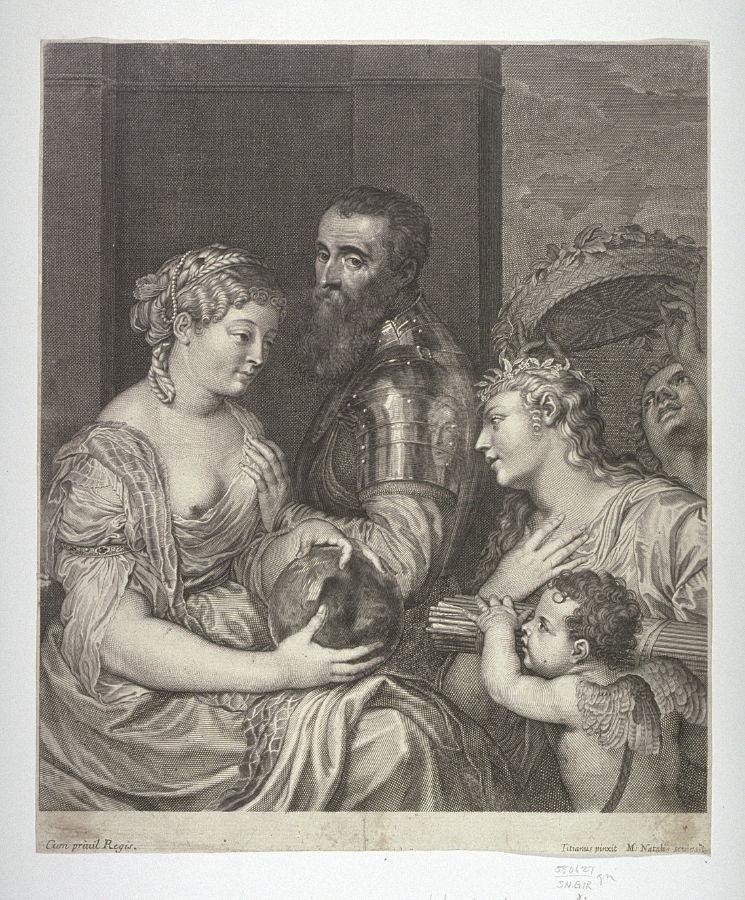
Fig. 6: Portrait of Alphonse d’Avalos, Marquis de Guast after Titian, Michael Natalis, seventeenth century, engraving/print, 32.2 x 26.8 cm (image), Fine Arts Museums of San Francisco.
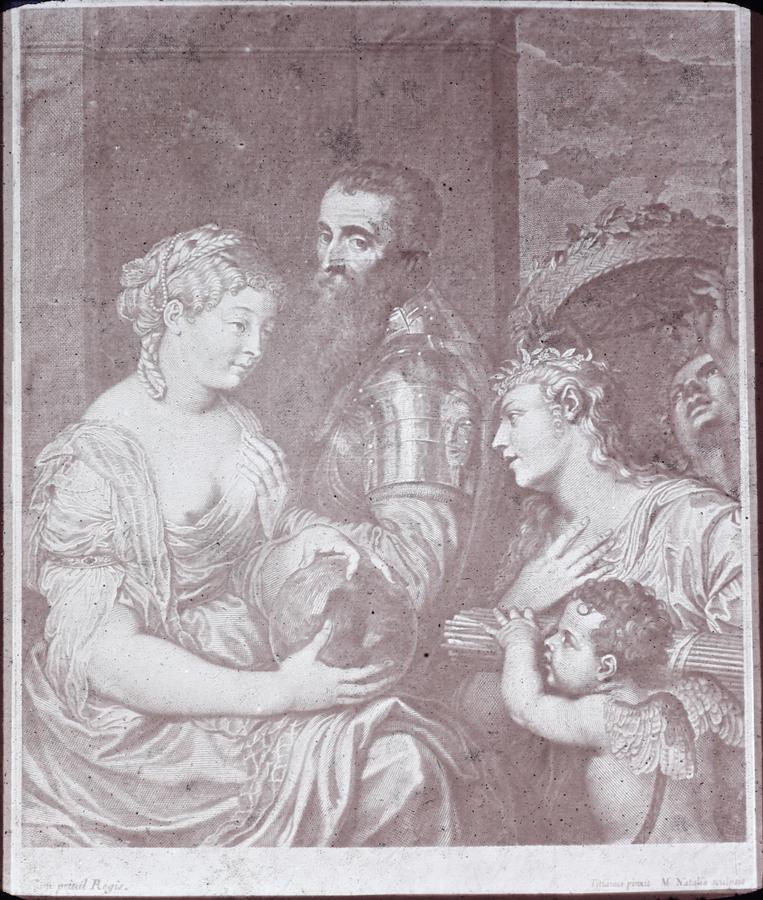
Fig. 7: Detail of lantern slide photograph of Titian’s Allegory of Marriage (c. 1530), slide no. 3725, Bruno Meyer, c. 1883, carbon print on glass, 85 x 100 mm, KIT Archives, Karlsruhe, inv. no. 28002 sign. 872.
What we do know is that a few years later Berlin became a hotspot for slide projection. Art historiography accordingly places the Berliner Herman Grimm (cf. Rößler 2010) in the role of the successful promoter and the Karlsruher Bruno Meyer in that of the failed inventor (Dilly 1995), but I would argue that it is not that straightforward. Although it may be true that Herman Grimm (1897), who published a quite influential manifesto on slide projection,16 was indeed an important protagonist, further research would be necessary to be certain exactly what kind of influence Meyer had on Grimm.
In order to explain Grimm’s success in Berlin, we have to consider that his former student Franz Stoedtner founded a picture agency called the Institut für wissenschaftliche Projektions-Photographie (Institute for Scientific Projection-Photography) in 1895. It is remarkable to observe that with Stoedtner, another art historian (Meyer being the first) became a picture producer serving the needs of his own academic field. While Dilly (1995, 39) has suggested that electrical light technology was essential for the breakthrough of slide projection, we can conclude, following Meyer, that questions of production and distribution of the picture material were just as crucial in establishing art historical slide projection.17 The latter is precisely what we can observe in the case of Grimm: although the latter never makes any reference to it, the availability of slides was dramatically improved upon by Stoedtner’s picture agency, which was located right next to the university building in Berlin, as Dorothee Haffner (2007, 123) has pointed out. When Grimm wrote his three reports in 1892 and 1893, he used slides from other picture agencies and only mentioned a photographer named Günther who worked for him (Grimm 1897, 288). Similar to Meyer, Grimm also used his own lantern and bought the slides himself (Rößler 2010, 85). However, a broader historical context calls into question the claim that Grimm was the principal protagonist and a type of genius figure (Dilly 1975, 162; 1995, 39; 2009, 95) whose rhetoric talent and outstanding position in academia allowed him to establish slide projection. In his diffusion theory, Everett Rogers, for instance, attempts to describe the structure of processes of innovation that new technologies face (Rogers 2003; cf. Ruchatz 2003, 50–58). Further basic research is required to reconstruct the network of the nineteenth-century protagonists in art historical slide projection. From what we know at present, we can only conclude that Meyer’s project was one of the earliest, when it comes to university education. According to Rogers, Meyer might be characterized as an “innovator,” while Grimm, who first began giving his slide lectures ten years after Meyer,—as the situation had changed dramatically in terms of the availability of visual material—could be called an “early adopter” (Rogers 2003, 248–249).
When it comes to Grimm’s euphoric depiction of slide projection in his text from 1897, he focuses on two main topics. First, he addresses the artwork itself, and second, this work as part of a larger art historical context—when, for instance, he refers to the ability of slides to illuminate the qualities of single artists or whole epochs. Concerning the first, Grimm is preoccupied primarily with the role of magnification. As Grimm describes it, enlargement allows us to study the work of art more closely and engenders a heightened knowledge of individual artists. In his manifesto, Grimm is deeply committed to the aesthetic effects of projection. For him, the work of art becomes “isolated” and therefore “a new creation of present time”18 through projection (Grimm 1897, 318), which is described as being easier than etchings and prints for students to commit to memory. A comparison could be drawn between the projected black and white image and preparations known from science. Hence, not only photography but also projection provides a basis for comparison of the diverse objects and artifacts beyond their medial boundaries, as Silke Wenk (1999, 299–300) and Julica Hiller-Norouzi (2009, n.p.) have pointed out. Grimm discusses the specific effects of enlargement with regard to several artists, such as Michelangelo, Raffael, Dürer, and Rembrandt. From his point of view, the role of the optical lantern is equivalent to that of the microscope (Grimm 1897, 359–360). It can be said that such sentiments of Grimm take part in a very old discourse, which is deeply rooted in the history of photography itself. With the invention of the daguerreotype back in 1839, the magnifying lens proved to widen the horizon of what could be seen. The discussion of magnifying effects runs through the discourse of photography in the nineteenth century like a central theme and becomes particularly evident during the development of slide projection, as mentioned above in the Langenheim brothers’ sales pitch.19
While Grimm’s first argument is for the slide as a tool to study a single piece of art better, his second addresses the context in which the artwork finds itself. Through slide projection, the development of an artist’s oeuvre or even of whole epochs become readily deducible. As Wenk (1999, 296–299) has elaborated, slide projection and the idea of a universal museum are kindred concepts to Grimm. The affinity between the two was of course to become even more refined and popular through André Malraux’s concept of the Musée Imaginaire [1947] six decades later (Malraux 1987).
Just as Meyer does in his introduction from 1879, Grimm also suggests that photography should still only be supplemental to etching. “Photographs of paintings as templates of glass plates for the optical lantern never create what good copperplates and etchings provide,”20 he writes in his manifesto (Grimm 1897, 362–363). Grimm remained rather skeptical about the benefits of photography itself; his emphasis is very much on how photographic processes enable projection, not necessarily on the projected photograph itself. The role of the slide is thus clearly attributed as one of transmission. Meyer’s decision to reproduce etchings in order to make projectable slides of paintings is only pragmatic. In contrast, Grimm represents a more mannered position, emphasizing the shape (or the disegno) as the far more important formal category for the evaluation of art (Ullrich 2009, 95–104)—an attitude which would be characteristic of later protagonists promoting slides in art historical education, such as Heinrich Wölfflin (Wyss 1996, 103–119). As a result of Grimm’s skepticism combined with Meyer’s pragmatism, the art of printmaking becomes revitalized by the new medium.
This echoes the contemporary discussion of the pros and cons of etching versus photography. It was Bruno Meyer, however, who, by representing a more progressive position compared to Grimm, celebrated the scientific progress brought about by photography. He points out that the errors occurring through photographic reproduction of artworks (in terms of contrast and color) are more measurable and easier to control (cf. Matyssek 2005, 229) than those resulting from other manual reproductions. Imprecisions of manual reproductions may be more detrimental to the attempt at faithfully reproducing a work of art, he argues in 1879.
16.4 The question of color
Due in large part to the convincing visual strategy that Wölfflin developed in his Principles of Art (1915), art history has primarily been understood as a huge panorama in black and white. Wölfflin’s method, a technique of comparing images side by side to demonstrate formal polarities in art actually required black and white, as Wyss (1996) and Thürlemann (2013, 79–95) have pointed out. Art history in the second half of the twentieth century could be perceived as being skeptical about reproductions in color. The new findings which I discuss here give rise to the question of whether this would also apply to the early twentieth and late nineteenth centuries.
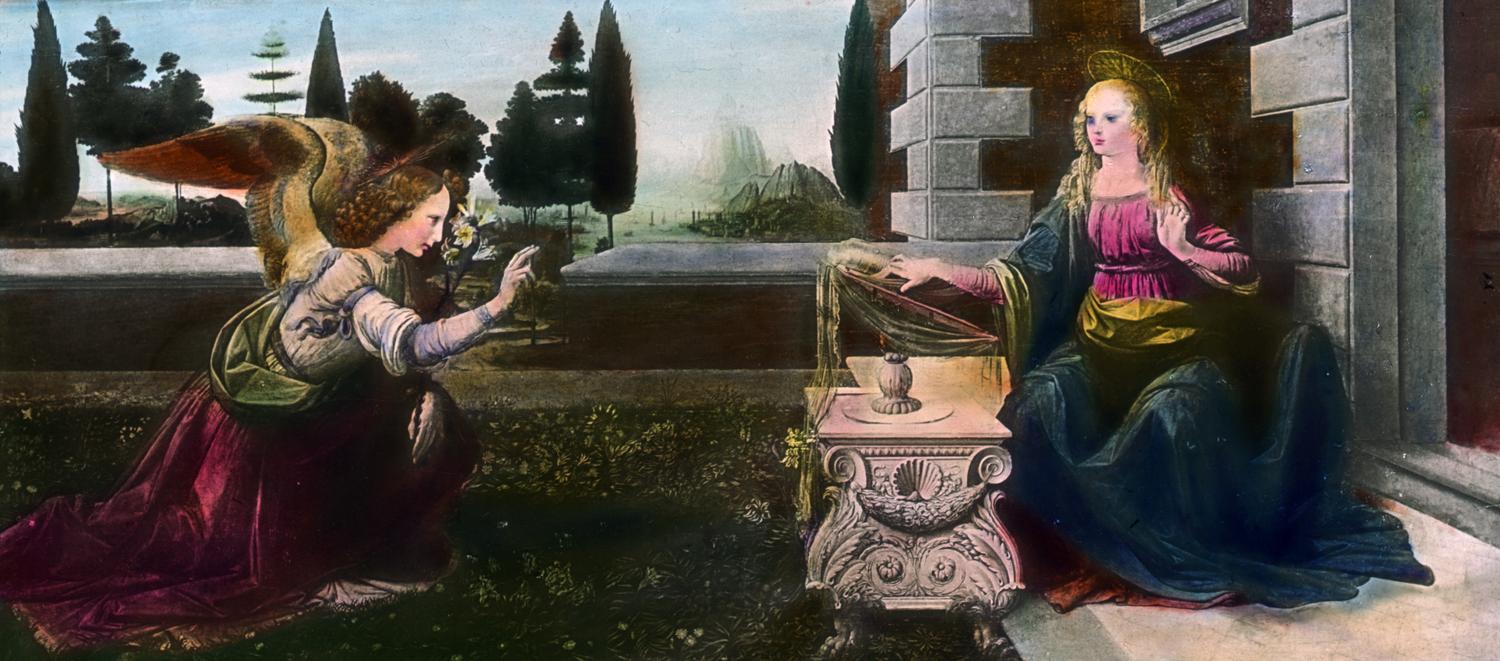
Fig. 8: Hand-colored lantern slide photograph, Leonardo da Vinci’s Annunciation, Department of Art History and Musicology, Johannes Gutenberg University, Mainz.
Given their marginalized role in photo historiography, we know very little about the use of slides in general, and there is very little evidence on the use of colored slides in particular. Aby Warburg is reported to have shown an Autochrome Lumière21 in 1912 at the Tenth International Congress of Art History in Rome in 1912 (Fawcett 1983, 457). In his article “Die Photographie im Dienste der Kunstwissenschaft,” Meyer (1879, 204–209) dedicates a whole section to the techniques of color photography and color reproduction, claiming that he presented colored prints to his students (Meyer 1879, 198). In the index of Glasphotogramme für den kunstwissenschaftlichen Unterricht, Meyer seems to be far more critical regarding the question of colored slides, yet offers colorizing them on demand (Meyer 1883, colsIX–X). Eventually, the Meyer slides did not appear in black and white at all but in a sepia tone.
Looking back at the history of projection from our vantage point today, it is the colored hand-painted lantern slides of the eighteenth and nineteenth centuries that characterize the age of the magic latern at its heyday. As mentioned above, during the process of innovation, photographed slides had to be differentiated from the older painted slides in terms of the accuracy of their reproduction. Painted slides represented nothing less than the antithesis to the photographic ones. Manufacturers had to bridge the introduction of photographic slides, where the absence of photographic color processes required them to be black and white, and the requirements of the audience who were used to seeing colored projection of painted slides (Ruchatz 2003, 196–209). Before—and even after—the market launch of the Autochrome Lumière, adding a layer of pigment by hand to the photographic plates was a rather simple way to overcome this deficit. Instructions of painting photographic slides are prevalent documents in the history of the medium. Lorenzo J. Marcy’s Sciopticon Manual (1877, 77–83), for instance, describes the technique.
The impressive number of 700 hand-colored art historical slides is still preserved at Johannes Gutenberg University, Mainz (see Fig. 8). They represent the series of Seestern Lichtbilder, which were distributed by E. A. Seemann in Leipzig from 1911 on.22 After World War I, Seemann used uvatypy to produce slides. This was a dye transfer process comparable to technicolor, which had been developed as an alternative to the Autochrome process and was marketed by Uvachrom AG in Munich. The tradition of expensive hand-painted and hand-colored magic lantern slides continued to survive until the 1920s. In 1925, Stoedtner offered hand-colored slides on demand: “Besides black and white, I also provide colored slides on demand, which, as far as it concerns art history, are colored by first-rate artists in the museums in front of the originals. (They are not to be confused with the usual colorized pictures.)”23 The advertisement seems to address a specialized audience, or at least we might presume that there must have been some demand for this. The text mentions the value of the slides to art history by claiming direct contact with the original. Indeed, the old medium of painting experiences a kind of afterlife here.
Examples like this show that photography, in terms of slide projection, did not necessarily mean photography in a genuine sense as we imagine it today, but also implies photographic reproductions from etchings and prints. When it comes to the early glass slides, photography works mainly as a medium of transference, a method of reproducing prints for projection purposes. Photographs executed on glass are, of course, part of the history of mechanical reproduction, and consequently face the same problems, such as adequate color reproduction in grey scales and stability. As described, we observe a coexistence of both photography and older reproduction techniques in the new medium of slide projection, which has not yet been discussed. Regarding the scholarly value of slides, hand-colored pieces appear to be somewhat paradoxical at first sight, in that the technical image seems to be corrupted by the older media, such as printmaking and painting. By causing an epistemological problem, they could link practices deriving from the use of the magic lantern more closely to photographic slide projection. These objects could help us become aware that producing pictures always depends on a variety of intentional decisions, no matter how hidden or obvious these processes are. In this regard, Grimm’s statement on the projected image being a new creation has to be considered to be valid for visual representations in general.
16.5 List of Figures
• Fig. 1: Lantern slide photograph on glass in wood mount of Smithsonian Institution Building under construction, William Langenheim (1807–1874) and Frederick Langenheim (1809–1879) Philadelphia, 1850, Smithsonian Castle Collection, gift of Tom Rall, Arlington, Virginia, https://newsdesk.si.edu/photos/langenheim-lantern-slide, accessed December 20, 2017.
• Fig. 2: Lantern slide photograph of Titian’s Flora (1515–20), slide no. 3738, Bruno Meyer, c. 1883, carbon print on glass, 85 x 100 mm, KIT Archives, Karlsruhe, inv. no. 28002 sign. 872.
• Fig. 3: Lantern slide photograph of Titian’s La Bella (1536), Bruno Meyer, c. 1883, carbon print on glass, 85 x 100 mm, KIT Archives, Karlsruhe, inv. no. 28002 sign. 872.
• Fig. 4: Lantern slide photograph of Titian’s Allegory of Marriage (c. 1530), slide no. 3725, Bruno Meyer, c. 1883, carbon print on glass, 85 x 100 mm, KIT Archives, Karlsruhe, inv. no. 28002 sign. 872.
• Fig. 5: Allegory of Marriage (Portrait of Alphonse d’Avalos, Marquis de Guast), Titian, c. 1530, oil on canvas, 123 x 107 cm, Louvre Museum, Paris, inv. no. 754.
• Fig. 6: Portrait of Alphonse d’Avalos, Marquis de Guast after Titian, Michael Natalis, seventeenth century, engraving/print, 32,2 x 26,8 cm (image), Fine Arts Museums of San Francisco.
• Fig. 7: Detail of lantern slide photograph of Titian’s Allegory of Marriage (c. 1530), slide no. 3725, Bruno Meyer, c. 1883, carbon print on glass, 85 x 100 mm, KIT Archives, Karlsruhe, inv. no. 28002 sign. 872.
• Fig. 8: Hand-colored lantern slide photograph, Leonardo da Vinci’s Annunciation, Department of Art History and Musicology, Johannes Gutenberg University, Mainz.
16.6 References
Bader, L. (2013). Bild-Prozesse im 19. Jahrhundert: Der Holbein-Streit und die Ursprünge der Kunstgeschichte. München: Wilhelm Fink.
Beyrodt, W. (1975). Diareihen für den Unterricht. In: Kunstwissenschaft und Kunstvermittlung. Ed. by I. Below. Gießen, 173–187.
Caraffa, C., ed. (2009). Fotografie als Instrument und Medium der Kunstgeschichte. München: Deutscher Kunstverlag.
Dilly, H. (1975). Lichtprojektion: Prothese der Kunstbetrachtung. In: Kunstwissenschaft und Kunstvermittlung. Ed. by I. Below. Gießen, 153–172.
– (1995). Bildwerfer: 121 Jahre wissenschaftliche Dia-Projektion. In: Zwischen Markt und Museum: Beiträge der Tagung Präsentationsformen von Fotografie am 24. und 25. Juni 1994 im Reiß-Museum der Stadt Mannheim. Rundbrief Fotografie, Sonderheft 2: Göppingen, 39–44.
– (2009). Weder Grimm noch Schmarsow, geschweige denn Wölfflin … Zur jüngsten Diskussion über die Diaprojektion um 1900. In: Fotografie als Instrument und Medium der Kunstgeschichte. Ed. by C. Caraffa. München: Deutscher Kunstverlag, 91–116.
Eisenhauer, J. F. (2006). Next Slide Please: Studies in Art Education. A Journal of Issues and Research 47(3):198–214.
Fawcett, T. (1983). Visual Facts and the Nineteenth Century Art Lecture. Art History 6(4):442–460.
Grimm, H. (1897). Die Umgestaltung der Universitätsvorlesungen über Neuere Kunstgeschichte durch die Anwendung des Skioptikons. In: Beitr äge zur Deutschen Culturgeschichte. Ed. by H. Grimm. Berlin: W. Herts, 276–395.
Haffner, D. (2007). “Die Kunstgeschichte ist ein technisches Fach.” Bilder an der Wand, auf dem Schirm und im Netz. In: Bild/Geschichte: Festschrift f ür Horst Bredekamp. Ed. by P. Helas, M. Polte, C. Rückert, and B. Uppemkamp. Berlin: Akademie-Verlag, 119–129.
Heß, H. (1999). Der Kunstverlag Franz Hanfstaengl und die fr ühe fotografische Kunstreproduktion: Das Kunstwerk und sein Abbild. München: Akademie Verlag.
Hiller-Norouzi, J. (2009). "Logos Versus Aisthesis. Die kunsthistorische Diaprojektion als codierendes Instrument. In: Raum – Perspektive – Medium: Panofsky und die visuellen Kulture. Ed. by Philipp Freytag et al. Tübingen, n. pag. url: https://publikationen.uni-tuebingen.de/xmlui/bitstream/handle/10900/46390/pdf/Hiller_BL.pdf?sequence=1&isAllowed=y (visited on December 20, 2017).
Hotz, J. (1965). Aktenausz üge zur Geschichte des Lehrstuhls und Instituts für Kunstgeschichte an der Technischen Hochschule Karlsruhe. Karlsruhe.
Lankheit, K. (1966). Kunstgeschichte unter dem Primat der Technik: Rektoratsrede gehalten bei der Jahresfeier am 4. Dezember 1965. Karlsruher Akademische Reden, Neue Folge 24:5–23.
Leighton, H. B. (1984). The Lantern Slide and Art History. History of Photography 8(2):107–118.
Malraux, A. (1987). Das imagin äre Museum. Frankfurt, New York: Campus Verlag.
Marcy, L. J. (1877). The Sciopticon Manual, Explaining Lantern Projections in General, and the Sciopticon Apparatus in Particular: Including Magic Lantern Attachments, Experiments, Novelties, Colored and Photo-transparencies, Mechanical Movements, Etc. Philadelphia: James A. Moore.
Matyssek, A. (2005). “Entdecker” und “Finder”: Über die fotografische Wissensproduktion der Kunstgeschichte. Berichte zur Wissenschaftsgeschichte 28(3):227–235.
McLuhan, M. [1964] (2015). Understanding Media: The Extensions of Man. Berkeley: Gingko Press. Critical Edition edited by Terrence Gordon.
Meyer, B. (1879). Die Photographie im Dienste der Kunstwissenschaft und des Kunstunterrichts. Westermanns illustrierte deutsche Monatshefte: Ein Familienbuch für das gesamte geistige Leben der Gegenwart 47:196–209.
– (1883). Glasphotogramme f ür den kunstwissenschaftlichen Unterricht. Karlsruhe: Selbstverl.
Nelson, R. S. (2000). The Slide Lecture, or the Work of Art “History” in the Age of Mechanical Reproduction. Critical Inquiry 26(3):414–434.
Papenbrock, M. (2006). Der Lehrstuhl für Kunstgeschichte in Karlsruhe: Ein Rückblick. In: Kunst und Architektur in Karlsruhe: Festschrift f ür Norbert Schneider. Ed. by K. Büttner and M. Papenbrock. Karlsruhe: Universitätsverlag Karlsruhe, 179–191.
Peters, D. (2009). Fotogeschichte als Teil der kunsthistorischen Wissenschaftsgeschichte. Kunstgeschichte. Open Peer Reviewed Journal. url: http://www.kunstgeschichte-ejournal.net/13/2/Peters.pdf (visited on August 17, 2019).
Preziosi, D. (1989). Rethinking Art History: Meditations on a Coy Science. New Haven: Yale University Press.
Reichle, I. (2002). Medienbrüche. kritische berichte. Zeitschrift f ür Kunst- und Kulturwissenschaften 1: 40–56. url: http://www.kunstgeschichte.de/kgs/publikationen/mb1.html (visited on August 17, 2019).
– (2005). Fotografie und Lichtbild: ,Die unsichtbaren’ Bildmedien der Kunstgeschichte. In: Sichtbarkeit und Medium: Austausch, Verknüpfung und Differenz naturwissenschaftlicher und ästhetischer Bildstrategien. Ed. by A. Zimmermann. Hamburg: Hamburg University Press, 169–181.
Rogers, E. M. (2003). Diffusion of Innovations. 3rd ed. New York.
Rößler, J. (2010). Erlebnisbegriff und Skioptikon: Herman Grimm und die Geisteswissenschaften an der Berliner Universität. In: In der Mitte Berlins: 200 Jahre Kunstgeschichte an der Humboldt-Universität. Ed. by H. Bredekamp and A. S. Labuda. Berlin: Gebr. Mann Verlag, 69–90.
Ruchatz, J. (2000). The Magic Lantern in Connection with Pohotography: Rationalisation and Technology. In: Visual Delights: Essays on the Popular and Projected Image in the 19th Century. Ed. by S. Popple and V. Toulmin. Wiltshire: Flicks Books, 38–49.
– (2003). Licht und Wahrheit: Eine Mediumgeschichte der fotografischen Projektion. München: Fink.
Thürlemann, F. (2013). Mehr als ein Bild: F ür eine Kunstgeschichte des hyperimage. München: Fink.
Ullrich, W. (2009). Raffinierte Kunst: Übung vor Reproduktionen. Berlin: Wagenbach.
Wenk, S. (1999). Zeigen und Schweigen: Der kunsthistorische Diskurs und die Diaprojektion. In: Konfigurationen: Zwischen Kunst und Medien. Ed. by S. Schade. München: Fink, 293–305.
Wölfflin, H. (1915). Kunstgeschichtliche Grundbegriffe: Das Problem der Stilentwickelung in der neueren Kunst. Munich: Bruckmann.
Wyss, B. (1996). Der Wille zur Kunst: Zur ästhetischen Mentalität der Moderne. Köln: Dumont.
Footnotes
I am very grateful to Jason King, thanks to whose patience language barriers between German and English were overcome in this paper. Without the invaluable support and archival assistance provided by both Elke Leinenweber at the KIT Archives and Alexandra Axtmann in the KIT Art History Department, this paper could not have been written. Julia Bärnighausen, Ute Dercks, and Klaus T. Weber also graciously gave me access to their collections.
Dilly (1975) provided the first academic reflection on art history’s “media history,” turning his focus later specifically to the role of Wölfflin with regard to double projection (1995). Later (2009), he revised his assumption that Wöfflin was the inventor of double projection. A very interesting resource on the contemporary use of 35-mm slides during the 1970s is provided by Wolfgang Beyrodt (1975). Silke Wenk’s contribution (1999) introduces a feminist reading into the discussion by shedding light on the kinds of assertions of power that come into play during the slide lecture. Concerning the use of slides in American art history, the earliest contributions are by Trevor Fawcett (1983) and Howard B. Leighton (1984), with the latter focusing on the preserved slides. In particular, Donald Preziosi (1989), Robert S. Nelson (2000), and—quite recently—Jennifer F. Eisenhauer (2006) deal with the specific nature of knowledge transfer through slide lectures. A media historical approach towards art historical slide projection, which also refers to current developments such as digitization, is represented by Ingeborg Reichle (2002; 2005) and by Julica Hiller-Norouzi (2009). Dorothee Haffner (2007) focuses on the work of Franz Stoedtner in connection to the Institute of Art History in Berlin.
Claude Félix Abel Niépce de Saint-Victor (1805–1870) experimented with albumen on glass in order to produce negatives. He was a cousin of Nicéphore Niépce.
“Glass Photograms for Art Historical Education.” Translations from German to English are provided in the footnotes.
Founded as a technical school in 1825, the university is now called Karlsruhe Institute of Technology (KIT).
It was Klaus Lankheit (1966, 7) who acknowledged Meyer’s role in the history of slide projection for the first time. Notes on Meyer’s work in Karlsruhe can be found in Martin Papenbrock (2006, 180–181).
Meyer describes the technique of dissolving views but does not elaborate on the projection technique he used in Vienna (1883, colsXXVII–XXVIII).
It is Jens Ruchatz’s (2003) landmark study, which illuminates the much neglected history of slide projection after the magic lantern, to which I am indebted here.
The company was called Max Fritz Optisches und Mechanisches Institut. Verlags- und Lehrmittelhandlung (Optical and Mechanical Institute. Publishing and Teaching Material).
“Es gibt kaum einen für mein Fach überhaupt in Frage kommenden Ort, an dem ein ungenügenderes Studienmaterial vorhanden ist, als in Karlsruhe.”
Meyer’s statements can be confirmed by a personal letter dated September 19, 1881 which he wrote to Minister Wilhelm Nokk (1832–1902), GLA 52 Nokk 131 (Generallandesarchiv Karlsruhe).
According to the documents, between 1882 and 1884, several creditors filed lawsuits against Meyer. His salary was confiscated and an enforcement proceeding was initiated: GLA 448 No. 210 Best. 10001 Sign. 210 (KIT Archives, Karlsruhe Institute of Technology).
The documents show, however, that problems arose around 1882, when Meyer requested more public funds in order to acquire a biunial lantern and cabinets for his slide library. Back in 1879, he had even urged the university to allow him to set up a photographic studio at the Polytechnische Hochschule. Cf. GLA 235/4422 quoted after Hotz (1965, n.p.).
See http://d-nb.info/gnd/117555916, accessed December 20, 2017.
The essay is entitled “Die Umgestaltung der Universitätsvorlesungen über neuere Kunstgeschichte durch die Anwendung des Skioptikons” (The Transformation of the University Lectures on Modern Art History through the Use of the Optical Lantern). In fact, the essay from 1897 is a compilation of three different texts that Grimm had published in the Nationalzeitung. Several articles of his had already appeared in the newspaper in 1892. In the winter term of 1891/92, Grimm began to teach art history using slide projection. He reports problems similar to Meyer’s with finding the image material.
Dilly also suggests that picture agencies would already have divided the market up among themselves in terms of image rights, but, first, Meyer reports using agency photographs, second, copyright laws were only passed in 1911 in Germany, for example, and, third, it was mainly technical problems that affected the reproduction of artworks.
“Das Werk wird isoliert und wie zu einer neuen Schöpfung der Gegenwart.“
Cf. Section “The Beginnings of Photographic Slide Projection” above.
“Photographien von Gemälden als Unterlage von Glasplatten zum Skioptikon bringen nie das hervor, was gute Kupferstiche oder Radierungen liefern.”
The Autochrome Lumière was a color process patented in 1903. Based on grains of potato starch which were dyed in different colors, an additive color mixing was achieved through exposure. Due to their darkness, the Autochromes had to be illuminated by transmitted light. Therefore, special viewing arrangements like the stereoscope, the diascope, or even projection were necessary.
See https://archiv.sachsen.de/archiv/bestand.jsp?oid=09.22&bestandid=21082&syg_id=256811#einleitung, accessed December 20, 2017.
“Außer schwarz-weiß liefere ich auch auf Wunsch farbige Diapositive, die, soweit es sich um Kunstgeschichte handelt, von ersten Künstler in den Museen vor den Originalen koloriert werden. (Nicht zu verwechseln mit gewöhnlichen kolorierten Bildern.)”
